Your homepage helps to set the tone for your entire website. If yours isn’t displaying the right content, or just doesn’t look how you envisioned it, you might want to make some changes. However, this can be an intimidating prospect if you don’t have much experience building websites.
The good news is that WordPress provides you with many possibilities for changing your homepage, and it’s not a difficult task to accomplish. There are several ways you can implement so that your home does a better job of conveying your message.
In this guide, we’ll cover what the WordPress homepage is and why you may want to change it. Then we’ll show you a few ways to edit and customize your homepage.
Let’s get started!
Prefer to watch the video version?
What the WordPress Homepage Is (And Why You May Want to Change Yours)
Your homepage is like your website’s welcome mat. It’s the first page visitors see when they type in your URL, so you’ll want it to make a solid first impression.
The homepage should provide visitors with a clear idea of what your website is about and what it can offer them. Slack’s homepage does an excellent job of showing off the product and getting people’s attention:
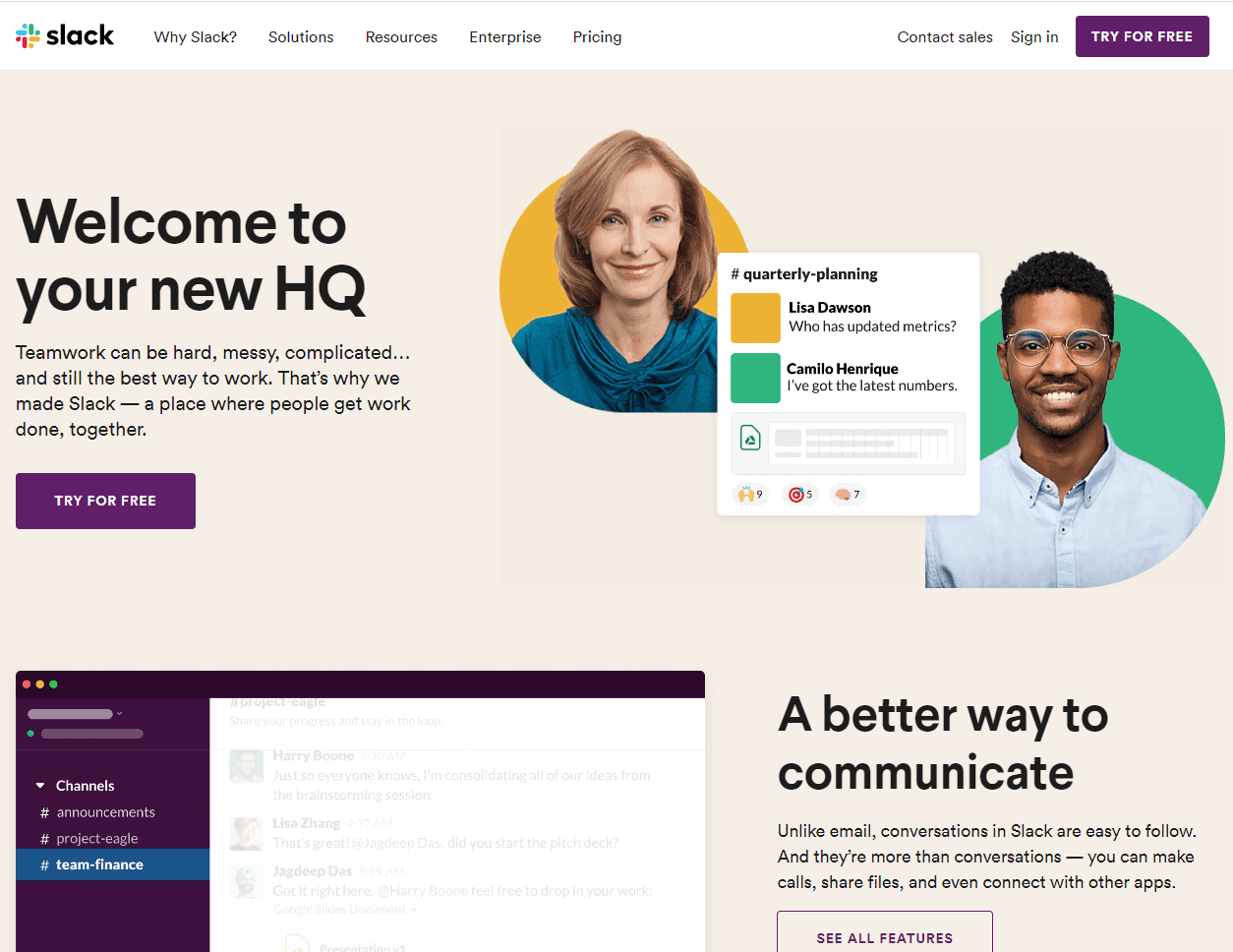
By default with many WordPress themes, your homepage displays your latest blog posts.
There’s a change, though, you may want something different featured there. That’s especially true if you don’t have a blog, or if it isn’t your website’s focus.
You might even want to change up your homepage throughout the years. For example, if you decide to have a holiday sale or event, you could update the page to advertise that promotion. In other words, there’s no shortage of reasons to change your WordPress homepage.
How to Set a Static Homepage
If you don’t want to display your blog posts on your website’s front page, you can set a ‘static’ homepage instead. A static page shows content that doesn’t change frequently. On your WordPress site, you can have a homepage as well as a separate blog page.
To create your homepage, start by logging into your admin dashboard. Click on Pages > Add New:
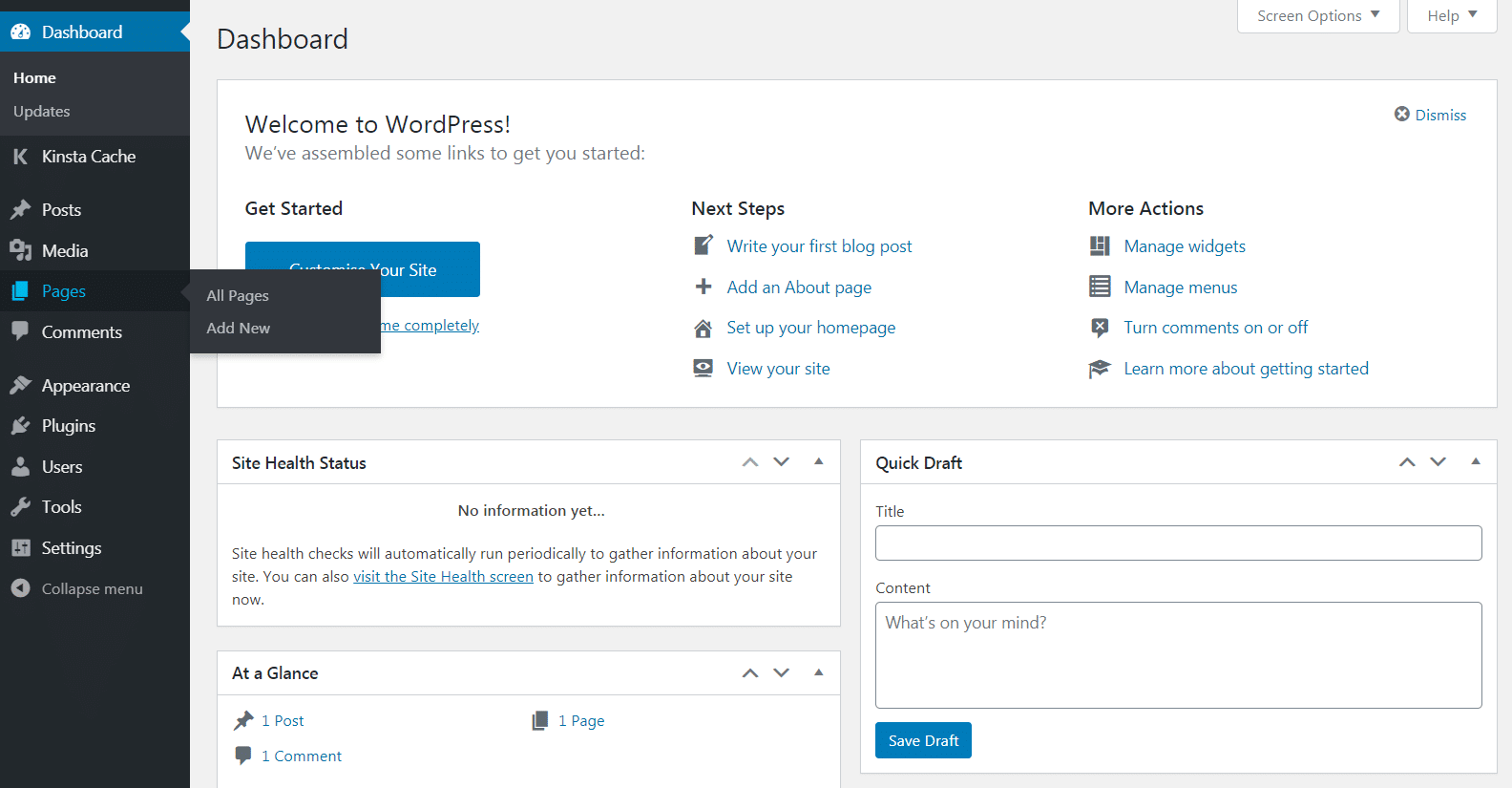
Give your WordPress homepage a name, and click on the Publish button. Then repeat these steps a second time to create your blog page.
Now that you have your pages ready, you can tell WordPress what to use them for.
Navigate to the Settings > Reading page, and under the Your Homepage Displays options, select A static page. Next, use the dropdown menus to choose your homepage and posts page:
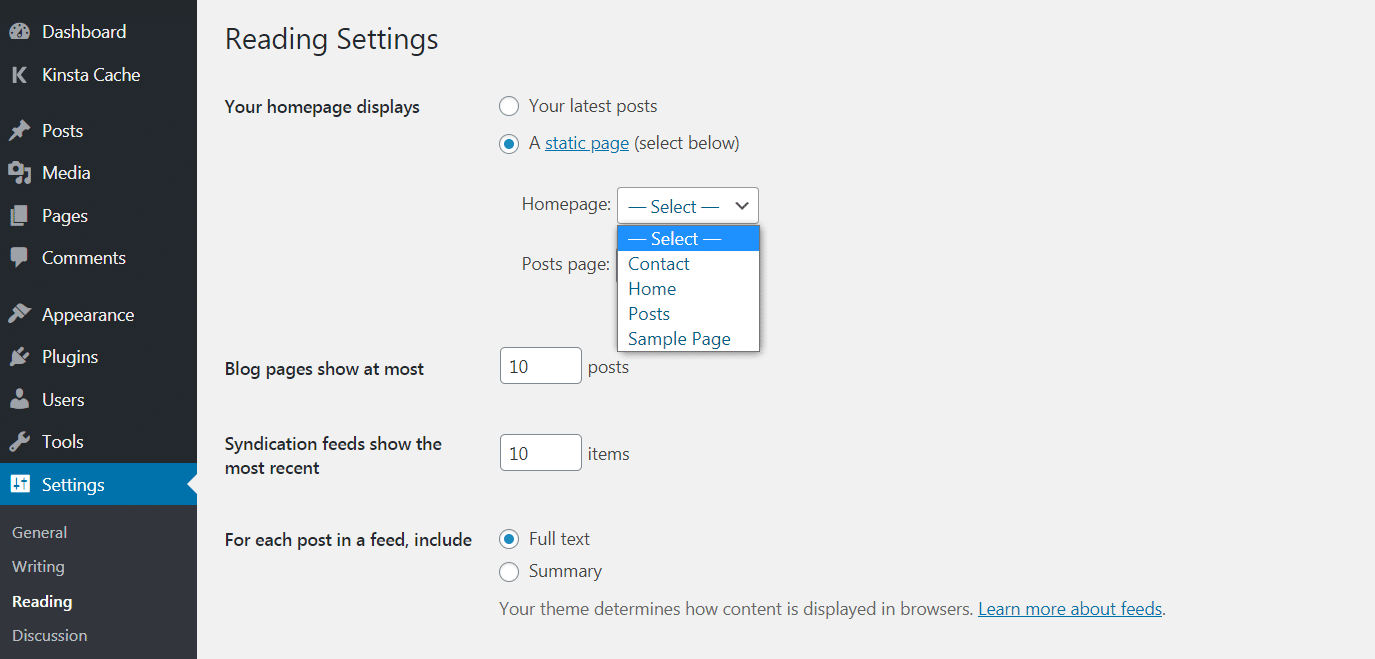
While you’re performing these steps, you may want to put your site into maintenance mode. Doing this will show visitors a message that you set, rather than a nonfunctioning website or a generic error page. If you already get some traffic to your site, you’ll want to consider doing this before tweaking your homepage.
You can use the WP Maintenance Mode plugin to set this feature up:
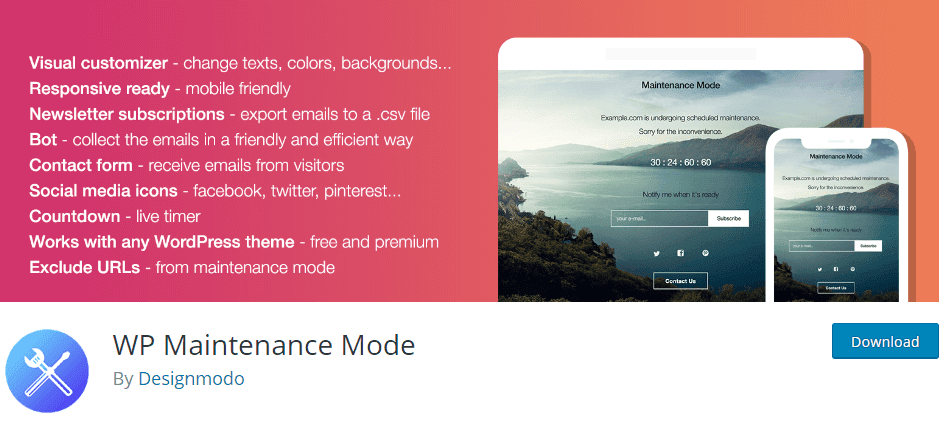
This plugin enables you to deliver a custom message to site visitors and allows you to create a custom message that lets visitors know your site will soon be back in action.
How to Change Your WordPress Homepage (3 Methods)
Now that you have your homepage set up, it’s time to design it and add some content.
Let’s have a look at three different tools you can use for the job.
1. Using the Theme Customizer to Edit Your Homepage
Many WordPress themes will provide you with a basic homepage design, as well as some options for editing it. You can access these options via the Theme Customizer.
Starting from your admin area, click on Appearance > Customize to launch the tool. The customizer will provide you with a live preview while you edit your homepage, so you can see how your tweaks affect your website’s look.
However, these changes won’t take effect until you click on the Publish button, so feel free to experiment.
Depending on your theme, you may have different options for the changes you can make. You can navigate using the menu tabs, or click on any area with a blue pencil icon to edit it:
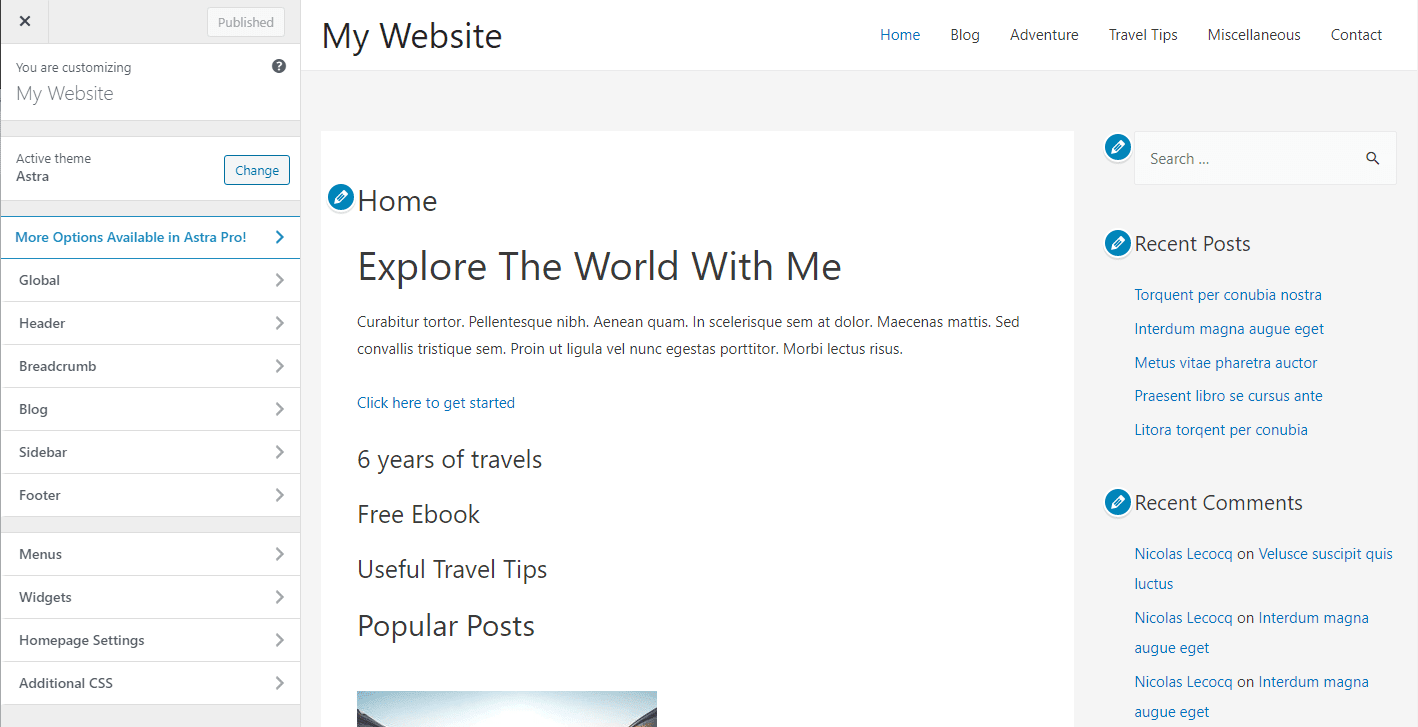
If your theme includes multiple templates for your pages, you may want to start by exploring those.
Some themes give you options for where to place your sidebar, for example, or let you remove that element entirely for a full-width page:

If there are sections of the homepage that you’d rather not use, you can use the theme customizer to remove them.
You can do this by navigating to the element in the menu and clicking on the eye icon next to the name of the section:

You can always bring back any areas you’ve removed by clicking on the same icon again. You can also drag the items in the column around if you’d like to change their order.
2. Editing Your WordPress Homepage With the Block Editor
Even if you’ve made some changes with the theme customizer, you might want to make further edits using the Block Editor. The latter offers you more options for tweaking your homepage’s design and layout.
To get started, navigate to your homepage from the admin dashboard by clicking on Pages, and then selecting whichever page you set as home. With the Block Editor, you can add many different types of content to your homepage. You might want to begin with some text introducing your website and what you do.
To get started, you can click on the page and just start typing. The appropriate paragraph block will be created for you automatically.
You can also select the block yourself by clicking on the plus symbol, either in the top-left corner of the screen or when it appears in the editor window. Then you can select or search for the paragraph block:

Once you have your text in place, you can use the block settings menu to customize it further. Under Text settings, you can change the size of your text by selecting a preset or custom size. You can even include a drop cap for some extra style points.
To add a bit of color to your paragraph, you may want to explore the Color settings. Again, you can choose from a set of predefined colors or use a custom brand color:
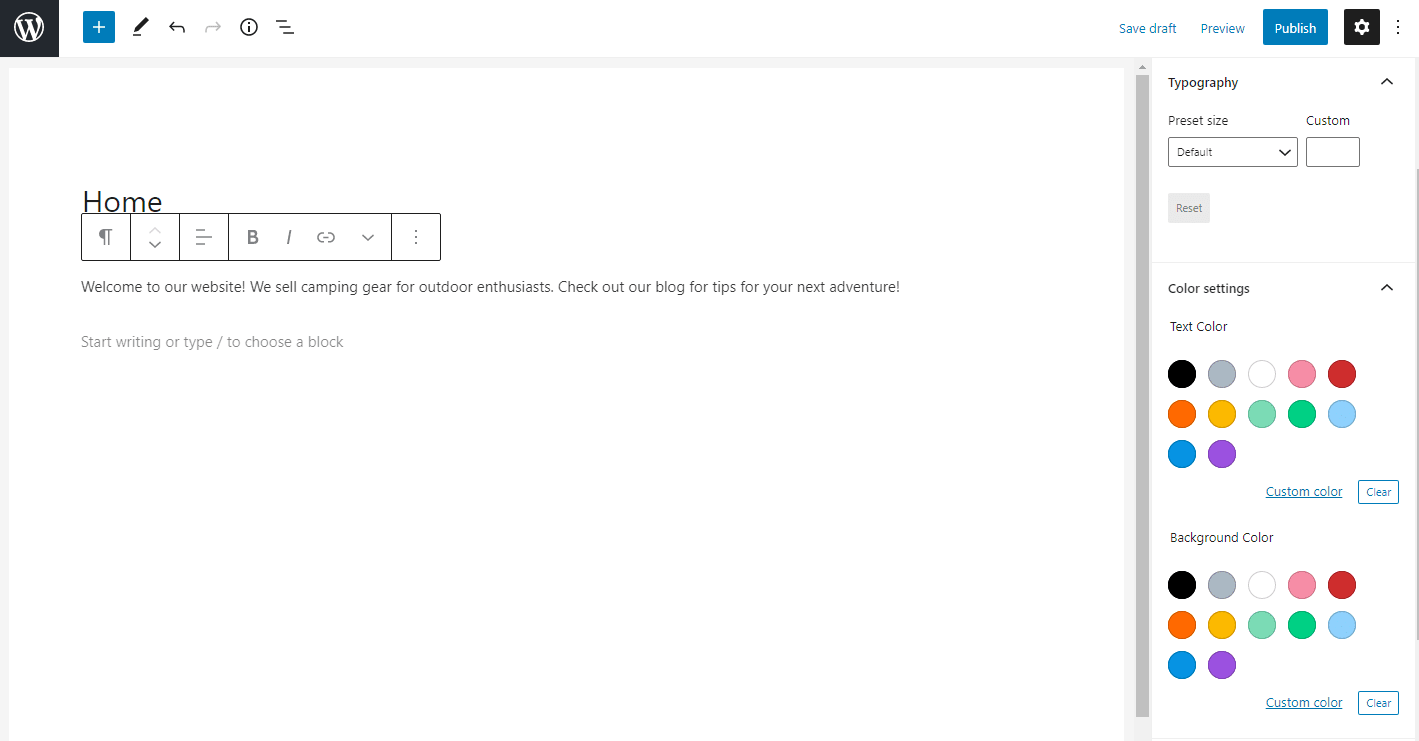
You’ll likely want to include some images on your homepage as well.
You can do this by clicking on the plus symbol and selecting the Image block:
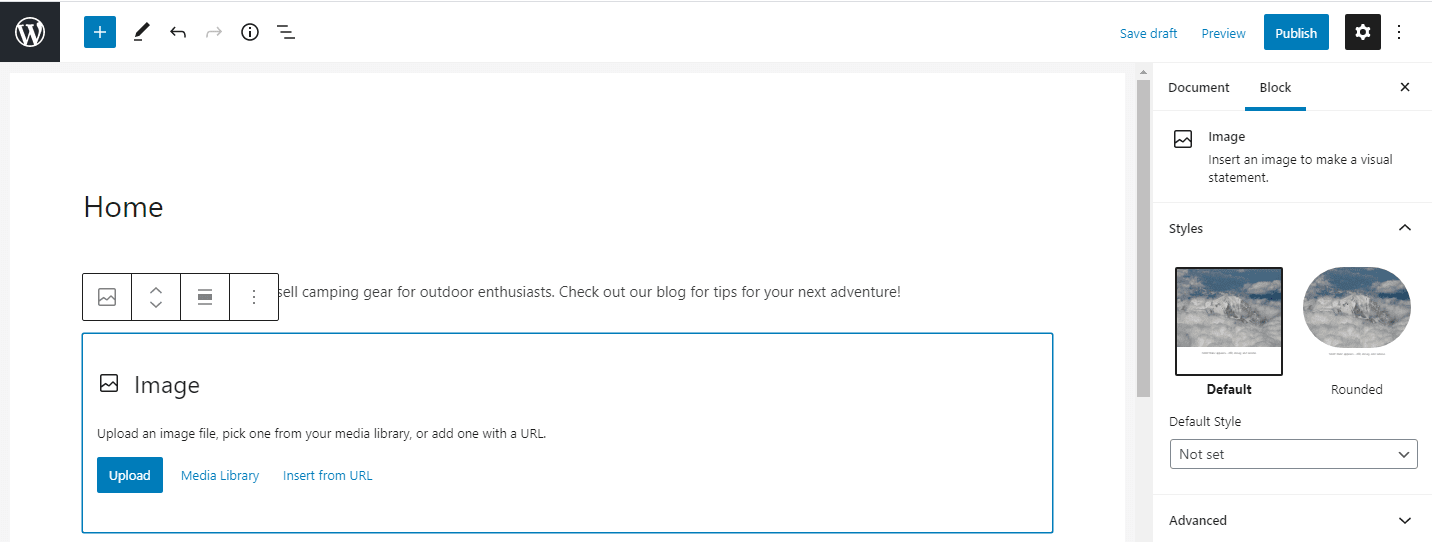
You can use the resulting block to upload an image, select one from your Media Library, or add one via a URL. You can then use the toolbar just above the block to adjust the image’s alignment or move it up and down the page.
If you’d like to add a caption, there’s space below the picture to include one.
At this point, you can continue adding blocks until you’re happy with your page. To access more blocks, you can click on the plus symbol and either browse or search the resulting menu.
You can also click on Browse all to see all of the blocks you have access to.
For example, if you’re planning to include a mix of media and text, you can do that using individual paragraph and image blocks. However, you may want to try using a Media & Text block instead:
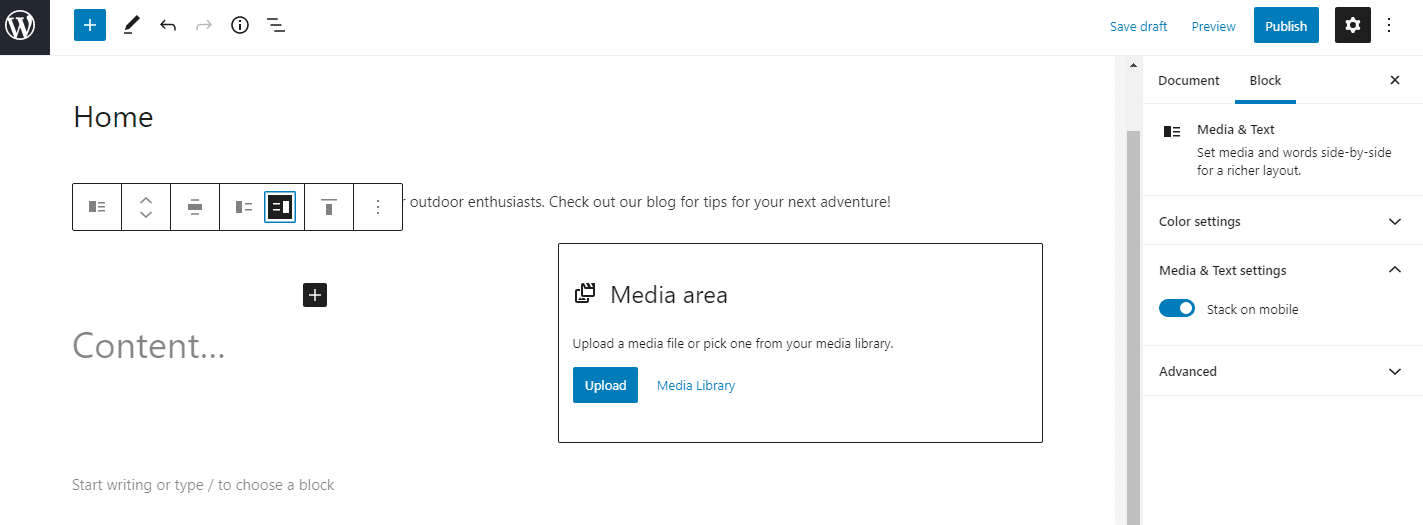
This block enables you to display both media and written content in the same block, in a variety of configurations:
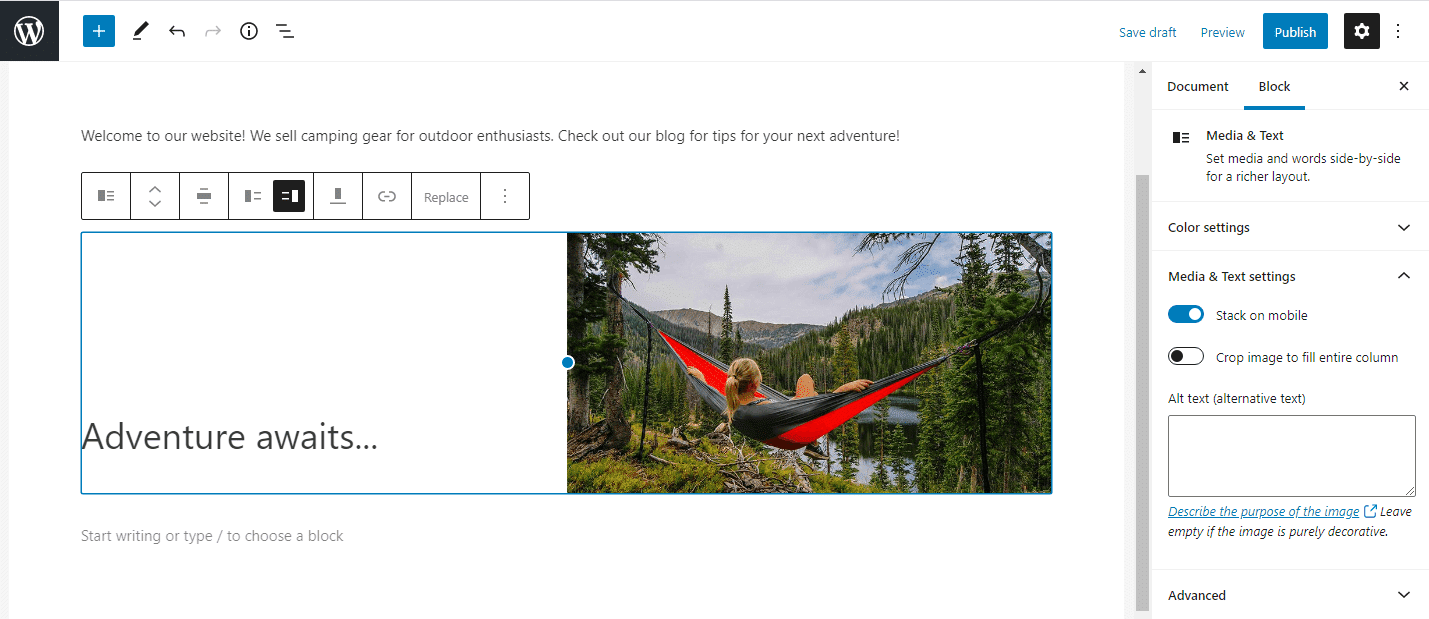
To remove a block, simply click the three vertical dots in the toolbar above it and choose Remove Block. With these tools, you’ll be able to design just about any homepage you can imagine.
3. Changing Your WordPress Homepage With the Classic Editor
If you prefer working with the Classic Editor, you can still build a stunning homepage. Once again, you’ll start from the WordPress admin dashboard.
Click on Pages, and then select the page you set as your site’s home.
To add text, simply begin typing. The text will be a paragraph by default, but you can use the dropdown menu to create a title or heading:

This dropdown menu is where you’ll change text from a paragraph into different headings.
The toolbar next to this drop-down area enables you to make further changes to your text. You can bold or italicize it, change the alignment, and create bulleted or numbered lists. If you’d like to add a blockquote to your page, you can do that here as well.
This toolbar is also where you’ll add links to your copy. Finally, there’s a button you can use to add a ‘read more’ tag. This could be a helpful feature if you will include articles on your site, but don’t want to display the full texts on your homepage.
The last button in the row will open another group of tools. These give you more options for styling your text, such as adding colors or changing the size:
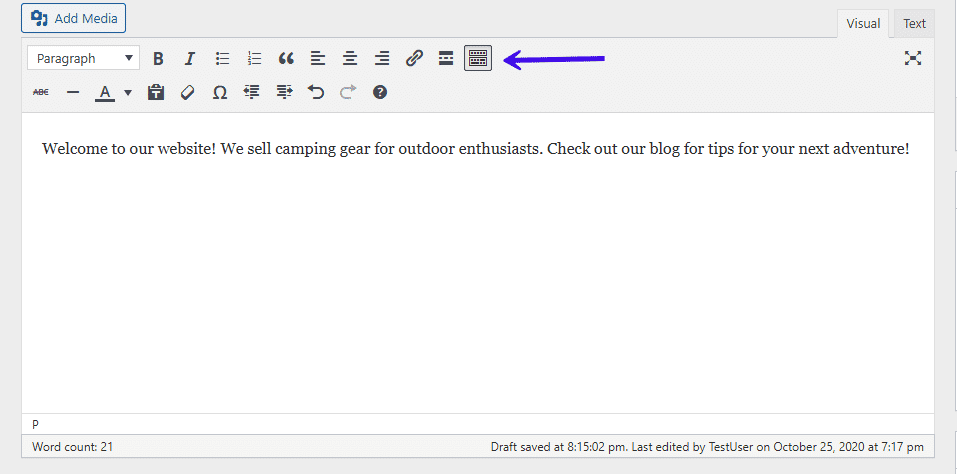
You can also add images and other media to your page using the Classic Editor. To do so, click on the Add Media button to open a new window. You can choose the Select Files button to add new files to your Media Library:
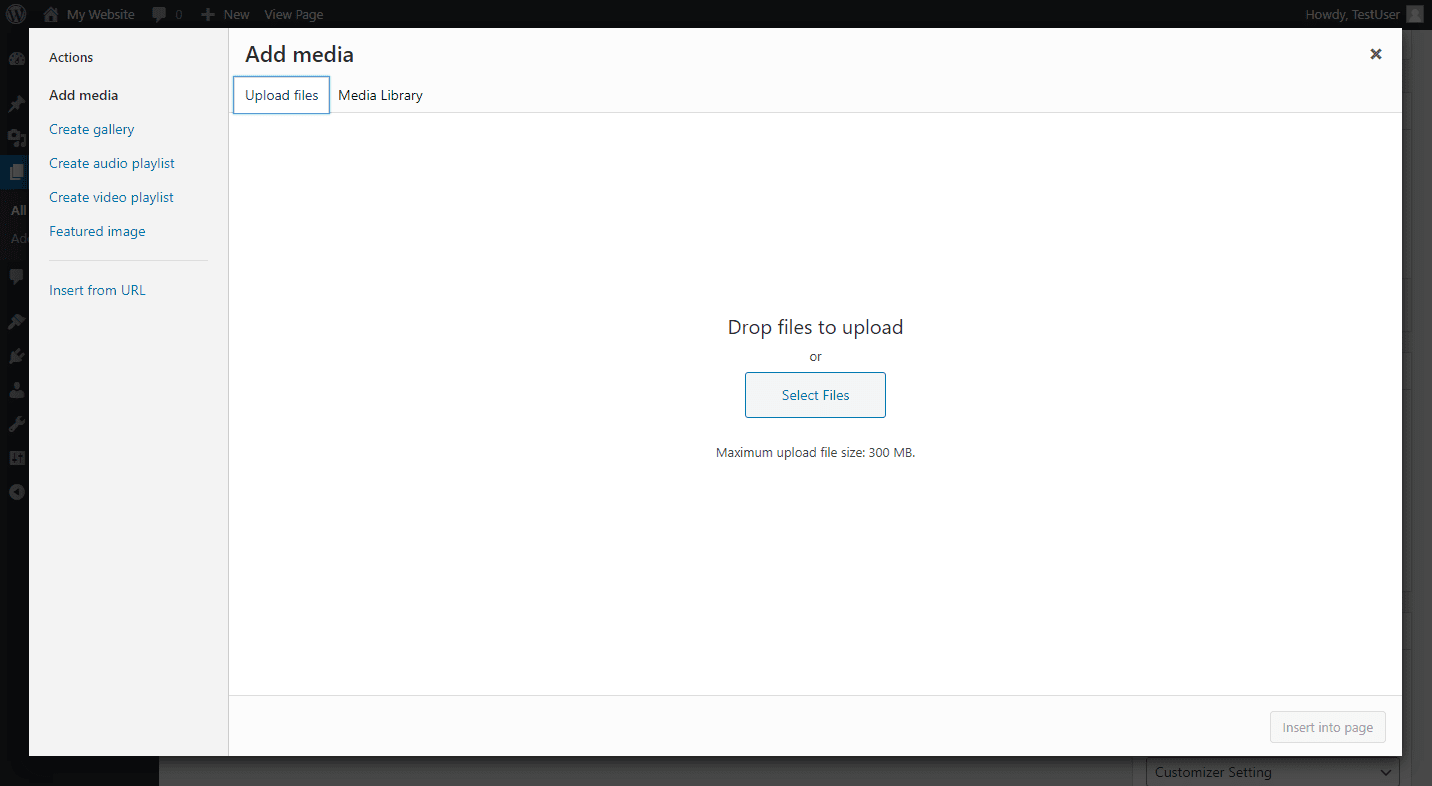
You can upload files from your device to add them to your Media Library.
From this window, you can also access previously-uploaded files by clicking on the Media Library tab. Select the file you’d like to add, and click the Insert into page button:
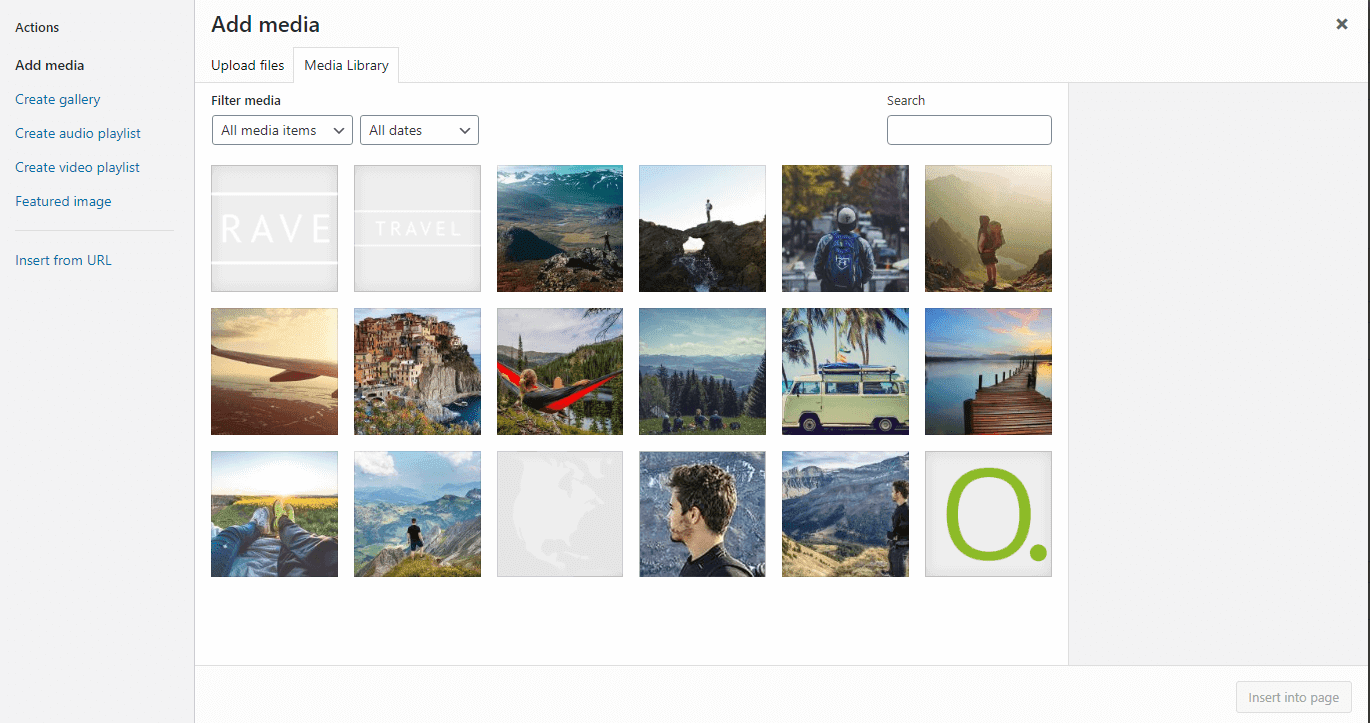
The image will now appear on your page. You can access options for the file by clicking on it. In the case of this image, you can change the alignment, edit it, or remove it:
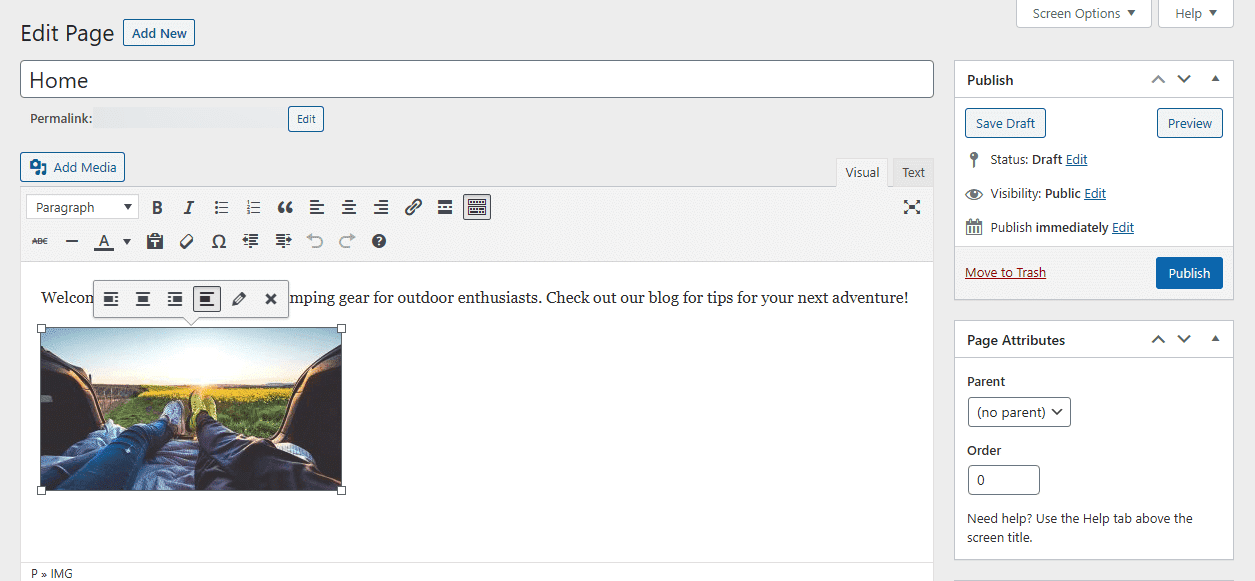
You can change the alignment of your image once you’ve inserted it.
To see how your homepage is coming along, you can click on the Preview button. Once you’re satisfied with your page’s appearance, click on the Publish button to save your changes and make them visible on your website.
Optional: Check Out the Twenty Twenty-One Theme
If you enjoy working with the block editor, you might be interested in checking out Twenty Twenty-One theme, the new default theme in WordPress 5.6:
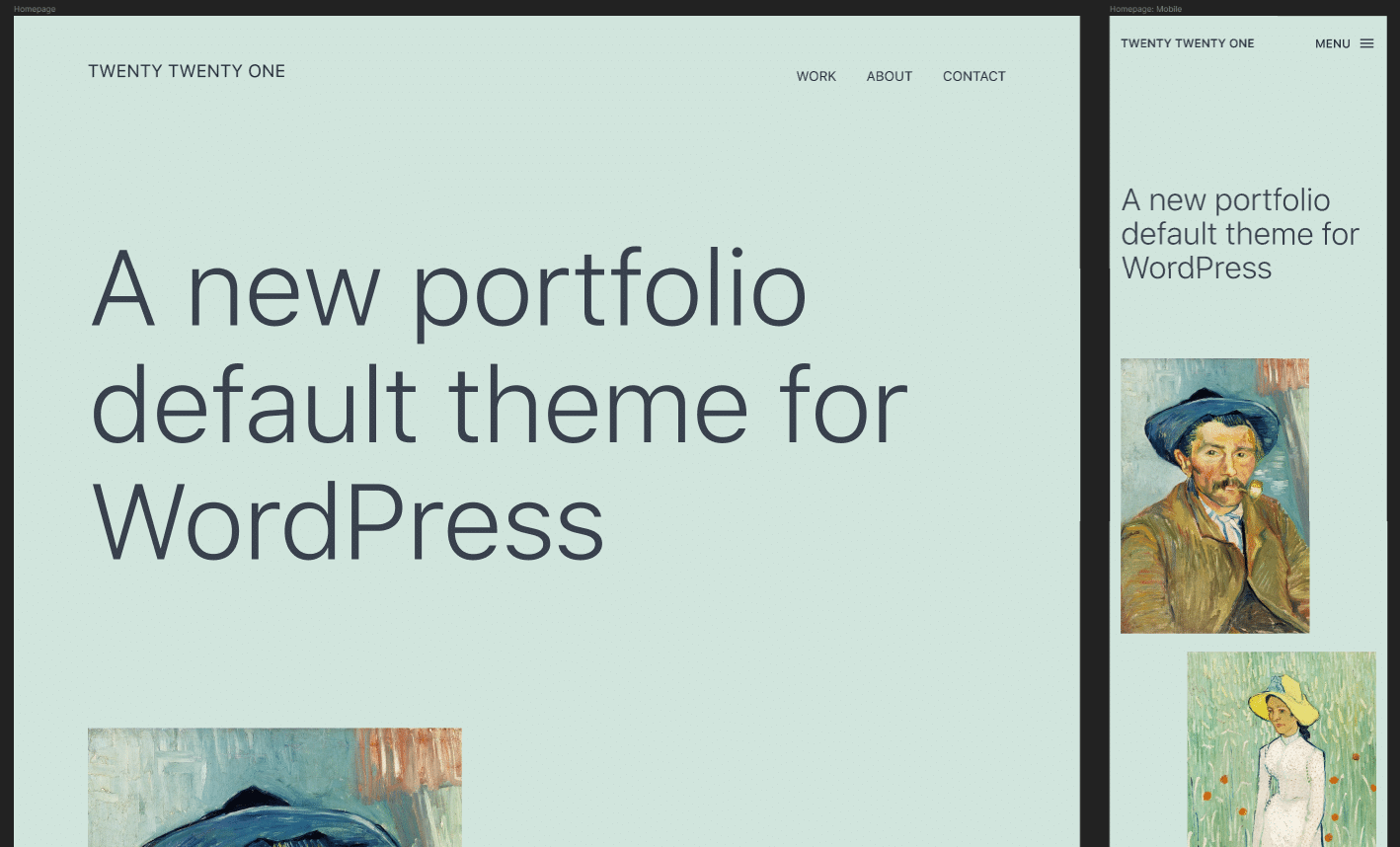
Twenty Twenty-One theme is designed to be flexible, and work well on a variety of different website types. It includes simple fonts and a muted, pastel color scheme. It also makes full use of ‘patterns’, which are predefined block layouts that you can further edit to suit your needs.
These specialized layouts, combined with the simplicity of Twenty Twenty-One, may make this theme an ideal choice if you’d like a highly customized homepage, without having to use a third-party page builder.
How to Build a Menu for Your Homepage
While you’re working on your homepage, you might also want to pay some attention to your navigation menu. While this menu likely appears on most pages of your site, it can be of particular use for first-time visitors landing on your homepage.
Starting from the admin dashboard, click on Appearance > Menus.
If you don’t have any menus yet, you’ll be prompted to create one, or you can select the Create Menu button. Your menu will need a name to distinguish it from other menus you may build:
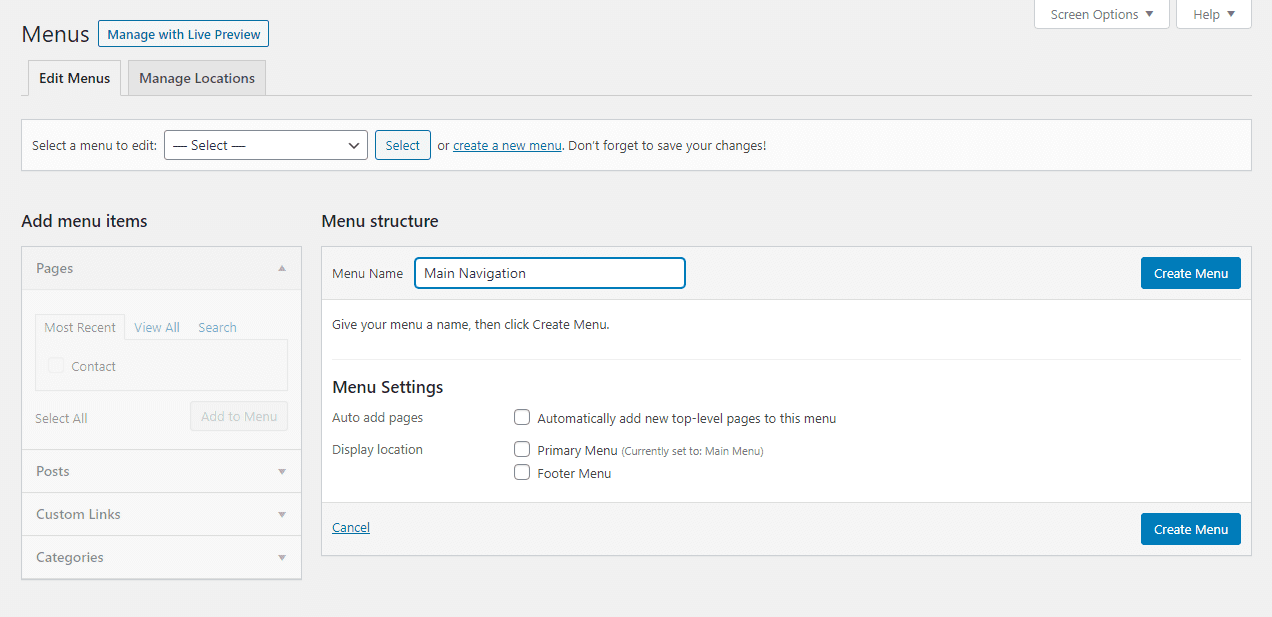
The next step is to add pages to the menu. You can add them individually, or check the Auto add pages boxes to add all top-level pages automatically.
If you’d prefer to select the pages yourself, select the View All tab in the column on the left. Check the boxes of the pages you’d like to add and click on the Add to Menu button:
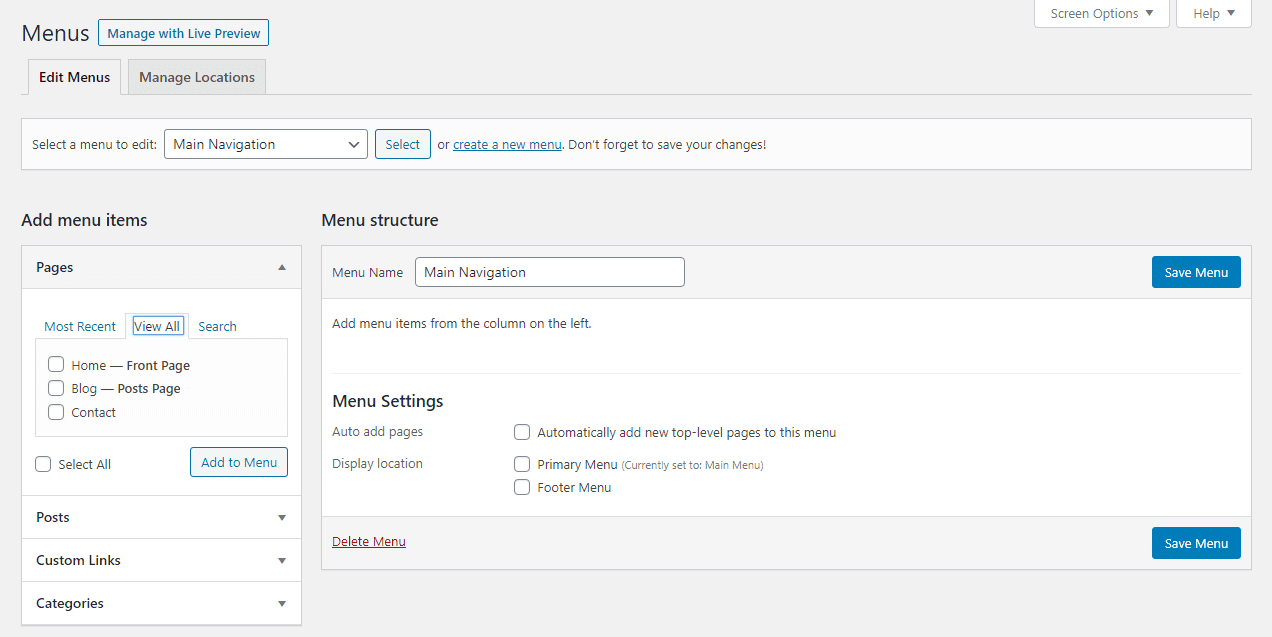
You can add top-level pages automatically, or manually select which pages to add.
Now that you’ve added your pages to the menu, you can determine the order in which they will appear. You can do this by simply dragging and dropping the menu items into place.
If you’d like to nest some items under others to create a dropdown style menu, you can do that here as well. This enables you to add more links to your navigation, without making it look cluttered or overwhelming.
All you need to do is drag the child page under and slightly to the right of the parent page:
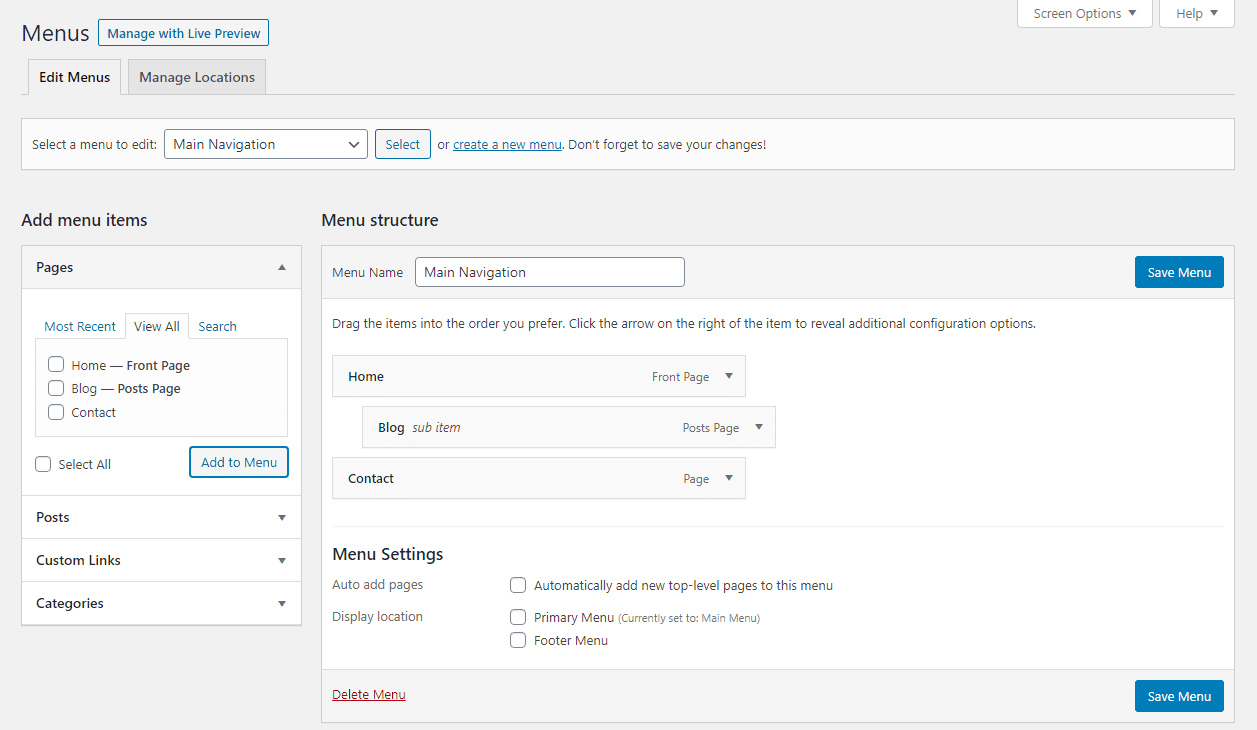
Finally, depending on your theme, you may have some options for where your menu appears on your page.
Popular options include the footer, across the top of the page, and sidebars (left or right). If the default menu options aren’t enough for you, here’s a list of the best plugins to extend your menu features.
Summary
A well-designed homepage can give visitors an accurate idea of what your site is about. When set up properly, it can be a powerful tool for ecommerce sites, personal blogs, and everything in between.
There are scenarios, though, where you need to change your homepage to reflect your brand messaging, a new service you may be offering now, your new theme. Thanks to WordPress, you have different ways you could use to change and edit your WordPress homepage, which include:
- Using the Theme Customizer to edit your homepage
- Editing your homepage with the Block Editor
- Changing your homepage with the Classic Editor
Do you still have questions about making changes to your WordPress homepage? Ask us in the comments section below!



Brilliant stuff as always ,Mr Matteo Duo! It’s my pleasure as always! As the new ( from an year or so 😃 Kinsta CMO ) may I ask You to set not to reload the page after accepting the cookies, please?
I get a lot from your blog like starting with the list of all hook’s in WP by défaut , best PHP resources sites ,etc!